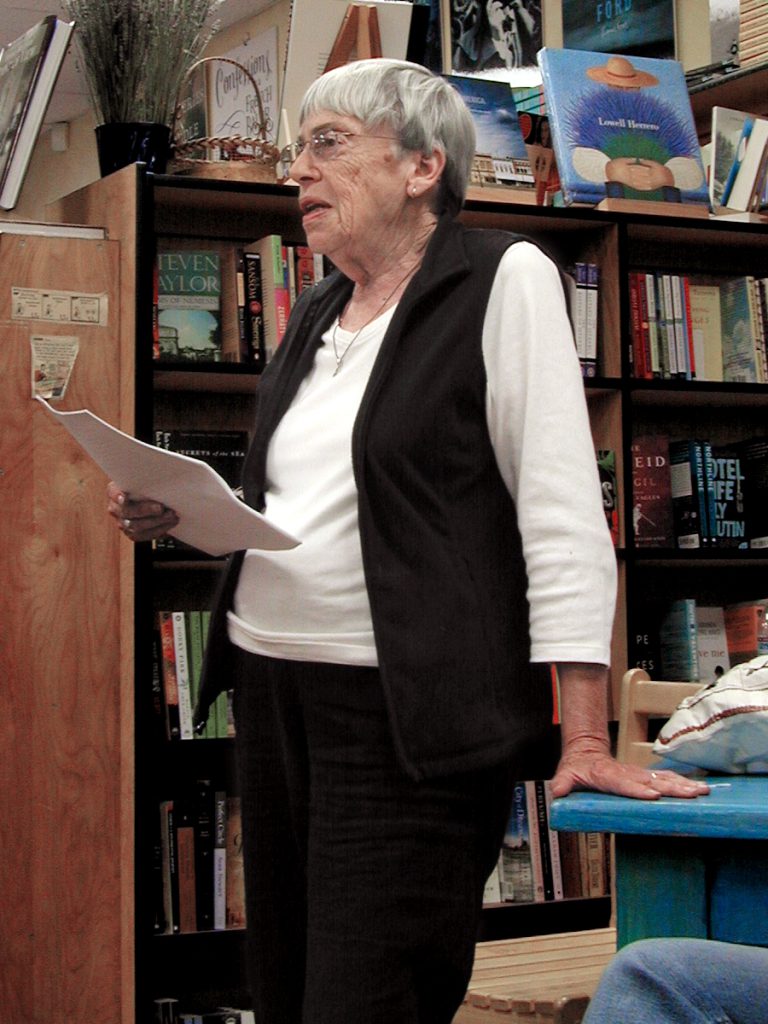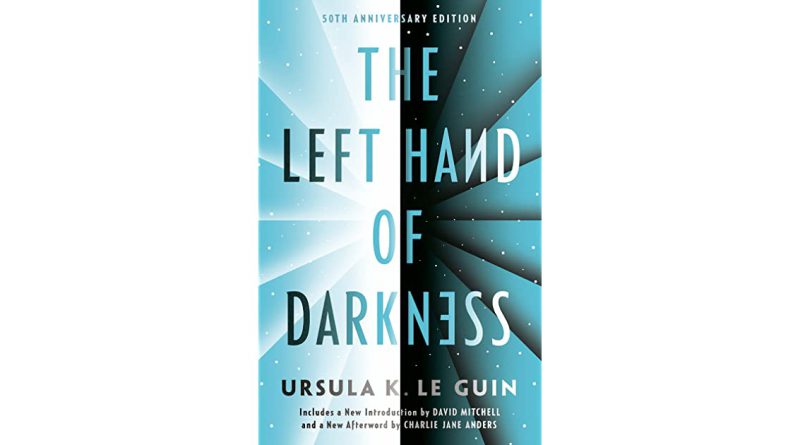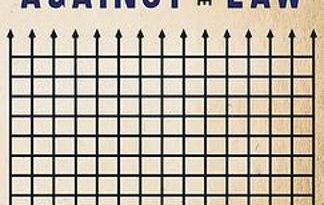The Left Hand of Darkness
The book for the meeting on 2nd March 2023 is The Left Hand of Darkness by Ursula K. Le Guin.
The novel begins two years into Genly Ai’s Envoy mission to the planet Gethen. His task is to convince the Gethenian nations to join an interplanetary trade network known as the Ekumen. Eighty percent of the time, the people of Gethen are hermaphroditic neuters, meaning that Gethenians are neither male, nor female, and they only express sexual characteristics or desire during a period known as kemmer, which lasts for a few days every month. Because Ai is a Terran man, Gethenians see him as either an anomaly, an alien, or a sexual pervert.
Ai lives in Erhenrang, the capital of the nation of Karhide. The prime minister of Karhide, Therem Harth rem ir Estraven, has been helping Ai arrange a meeting with King Argaven to plead his case. Ai distrusts Estraven, but requires and accepts his help in order to further his mission. Unfortunately, the morning of Ai’s meeting, Estraven is announced to be a traitor and exiled. Ai’s proposal to the King—that Karhide join the Ekumen—is subsequently rejected.
After his proposal is rejected, Ai travels around Karhide, learning about its rural people, and one of its two religion, Handdara. He meets a group of Handdara Foretellers, who are able to see the future, and who inform him that within five years, Gethen will be a member of the Ekumen. After he meets with the Foretellers, Ai briefly returns to Erhenrang, but, feeling unsafe there, he decides to try his luck in another of Gethen’s nations. He crosses the border to Orgoreyn, where he is adopted by a faction of bureaucrats who initially seem more receptive to his mission than the governing body of Karhide.
In Orgoreyn, Ai is surprised to be reunited with Estraven, who has been in the country since his exile several months ago. Unbeknownst to Ai, Estraven, who had worked on Ai’s behalf in Karhide, has helped bring him to Orgoreyn, where he hopes the Envoy’s mission will be more successful.
Ai naively believes his mission is close to completion, but Estraven can see that political tides are turning, such that the Orgata Commensals who once supported Ai have turned against him. The Commensals either believe Ai to be a fraud, or believe him to be real and therefore a threat to their own power. They imprison him and send him north to a labor camp where he quickly falls ill. Estraven feels responsible for Ai’s arrival in Orgoreyn (and therefore his imprisonment), and hatches a plan to free him.
Estraven breaks Ai out of the labor camp, but only after Ai has spent almost a month getting sicker and sicker. The pair spends a few days recovering in a tent hidden in the mountains, before beginning the next stage of Estraven’s plan: because Ai is no longer welcome in Orgoreyn, they will return to Karhide. However, because of the risk of recapture, they must travel north across the Gorbin Ice, where the only threat will be the environment itself.
All this time Ai is still unable to fully trust Estraven, or understand why he has sacrificed so much to help him. Ai has yet to fully accept or understand Gethenian sexuality. Because he is unable to see Estraven as man or a woman, Ai feels him to be inherently deceptive. However, during the three months the pair spend traveling together across treacherous terrain, Ai finally begins to see Estraven as Estraven sees himself: as neither a man nor a woman, but a complex person who is at once both and neither. They become like brothers, and come to love each other.
More than eighty days after their journey first began, Ai and Estraven arrive in a village in Karhide. From there they travel to the town of Sassinoth, where Ai is able to send a radio signal to his spaceship. Ai hopes that the arrival of his shipmates will finally convince Argaven to join the Ekumen, and will help preserve his own life. Although end Ai’s mission is nearly complete, Estraven is still in danger, since he has returned to Karhide even though he has been exiled. After the government becomes aware of Estraven’s presence in Sassinoth, he flees to the border, where he is shot and killed by border guards.
Even as Ai mourns Estraven, he manages to negotiate with the King. He convinces the King to welcome his shipmates and join the Ekumen. The novel ends as Ai’s shipmates travel to the other Gethenian nations to convince them to join as well, thereby fulfilling their mission. Ai is happy that his grand objective has been achieved, but he feels obligated to complete one last task: he travels to Estraven’s home to deliver Estraven’s diaries to his estranged father and son.
Brief Biography of Ursula K. Le Guin
Ursula K. Le Guin was born Ursula Kroeber to her father Alfred, an anthropologist, and her mother, Theodora, a writer. She studied at Radcliffe College, graduating Phi Beta Kappa, after which she won a Fulbright to study in Paris. There, she met her husband, and the pair moved to Portland, Oregon, where they’ve remained ever since. Le Guin published her first novel, Rocannon’s World, in 1966, and has since published an additional twenty-two novels, twelve short story collections, and twelve poetry collections, as well as works of criticism, translation, and children’s literature.

Historical Context of The Left Hand of Darkness
The Left Hand of Darkness, a book that imagines a world without gender (and thus without gender-based discrimination), was published in the middle of the Second Wave of feminism, a movement that began in the United States in the 1960s, calling for equal rights for women. This movement arguably began in 1949 with the publication of Simone De Beauvoir’s The Second Sex, but gained momentum with the FDA’s approval of oral birth control in 1961, and the publication of Betty Friedan’s The Feminine Mystique in 1963. This movement led to legal victories for gender equality and women’s rights such as the landmark Supreme Court case Roe v. Wade, which legalized abortion, Title IX, a law which was intended to end gender discrimination in educational institutions, and the Equal Pay Act, which was intended to end wage-related sex-based discrimination.
Other Books Related to The Left Hand of Darkness
The Left Hand of Darkness was an early work in The Hainish Cycle, a collection of novels and short stories set in Le Guin’s fictional universe where a people called the Hain have colonized and connected dozens of planets. Other books in this series include Rocannon’s World, her first novel, and The Dispossessed another one of her most highly regarded works. Le Guin was one of the first contemporary science fiction authors to consider the role that sex and gender play even in fictional societies, but far from the last. Other works of science fiction that interrogate sex and gender include Octavia Butler’s trilogy Lilith’s Brood (1987, 1988, 1989), and Joanna Russ’s The Female Man (1975).
Praise
“The Left Hand of Darkness surprises me again every time I reread it. There are so many wonderful ideas and stark emotional moments, and Le Guin’s language always startles me with its sheer power and wonder. And every detail in the book has little stories embedded inside it, and these stories keep intersecting and building on each other every time I revisit them—until you start to realize that everything is made of stories. As Genly Ai says on the very first page, ‘Truth is a matter of the imagination.’”
—Charlie Jane Anders, in the afterword to the 50th anniversary edition
“Perhaps it is enough to say that The Left Hand of Darkness is relevant, full stop. That’s what I see as Le Guin’s ultimate triumph with this book—not the impact it had on me, not the impact it had on the genre, not the exquisite prose that sings with every step. It is one thing to write a good story, or a great story. It is a whole other accomplishment, for an author of fiction, to write a true story.”
—Becky Chambers, in the introduction to the Folio Society edition
“This is my sacred scripture. This is what science fiction and fantasy can do. In much the same way that Star Trek shows us what the future can be like if we set aside our differences in pursuit of a common goal, Le Guin’s novel imagines how bridges can be built, chasms crossed. By the end, the book has changed us. Thus, the author not only demonstrates how to build worlds. She shows why we build worlds in the first place.”
—Robert Repino, Tor.com
“Probably one of the most extraordinary examples of soft-core sf is Ursula Le Guin’s The Left Hand of Darkness (1969), which reflects the author’s formidable background in anthropology as well as her overriding ethical and artistic concerns.”
—Susan Schwartz, The New York Times




